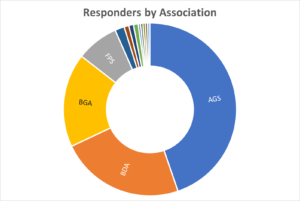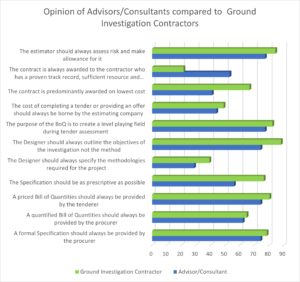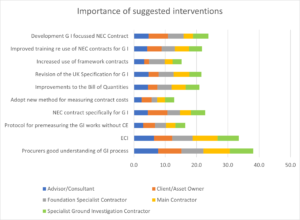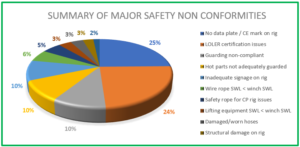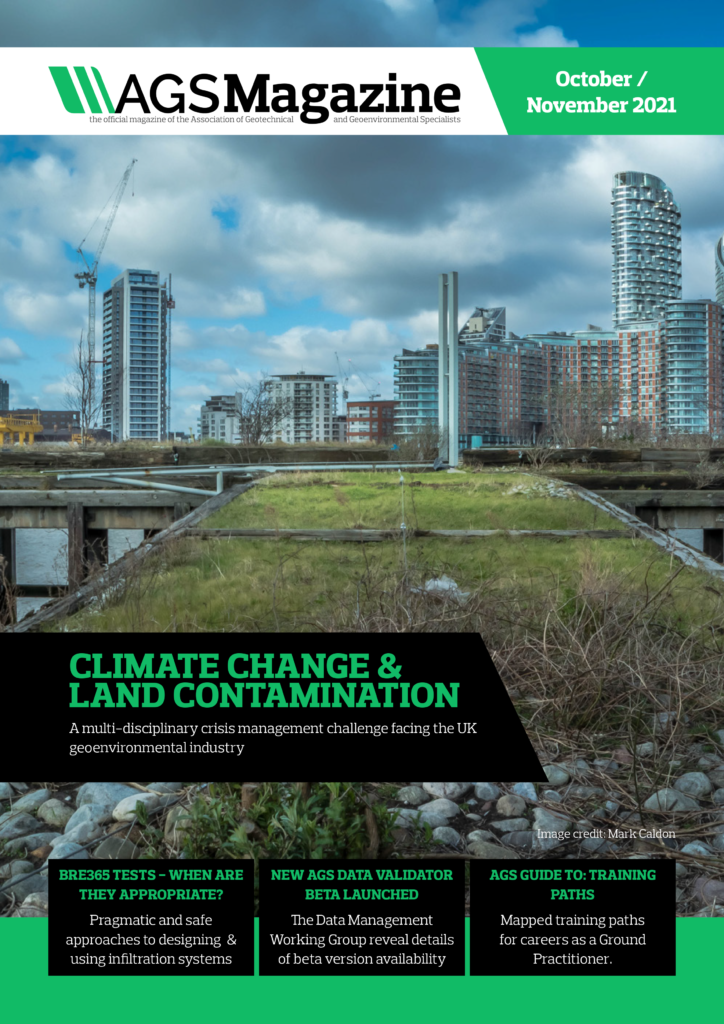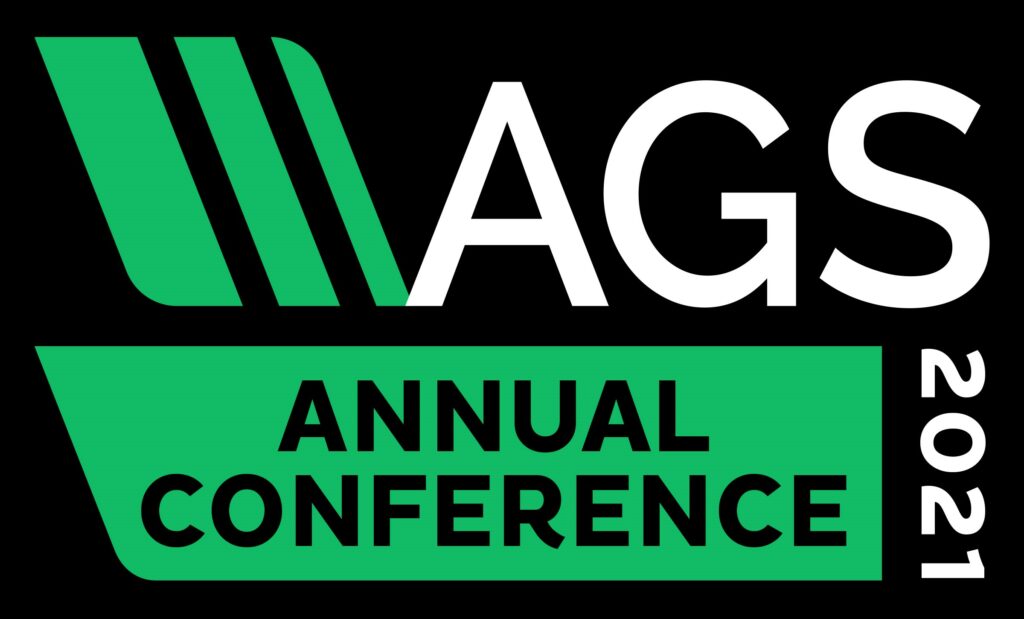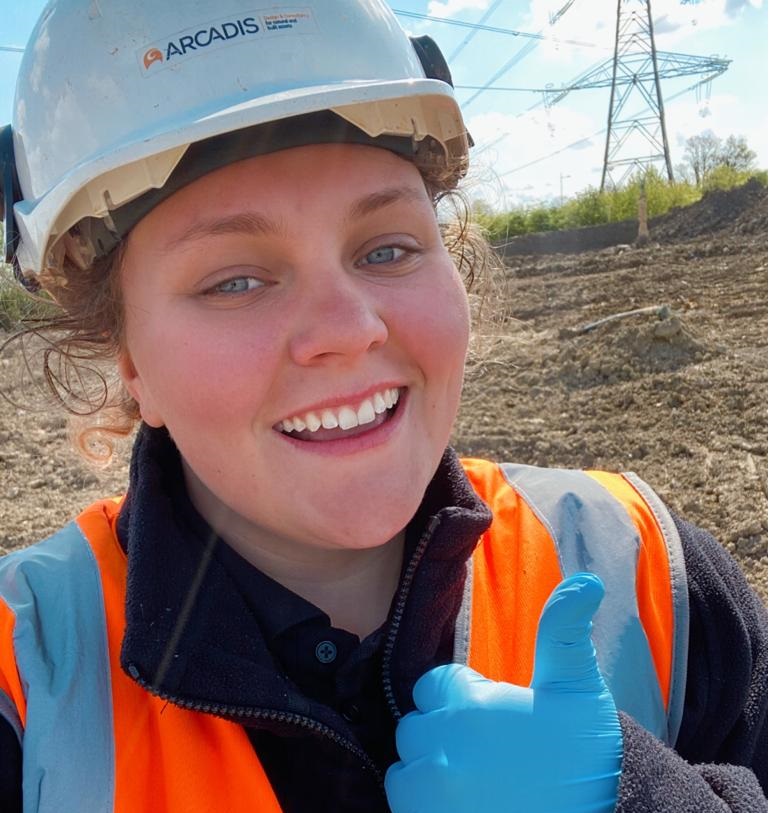
Full Name: Lauren Hunt
Job Title: Geo-environmental Consultant
Company: Arcadis
I am a geo-environmental consultant with Arcadis and joined two years ago after graduating with a first-class degree in Geology, from the University of Leicester. I’m based within the Site Evaluation and Restoration (SER) team which works on a variety of environmental / geotechnical risk assessment and ground remediation projects. We provide sustainable solutions to a host of geo-environmental challenges and I am fortunate to be part of such a friendly team, getting to work with experts and specialists, learning and discovering more every day! Outside of work I play cricket, go on hikes, and I absolutely adore sloths!
What is your background and how did you end up working within the geotechnical industry?
I’ve been collecting rocks and fossils since I was about 3 years old and have been fascinated with the ground beneath our feet and the geological processes that have formed our planet. I really enjoy being outside and exploring so loved all the fieldwork modules at university, therefore I wanted a job where I could be most active and at the forefront of site work. I found the toxicology and geochemistry modules at university interesting and ended up writing my dissertation discussing the sources of Phosphorus, its fate in the environment, and its role in eutrophication. I learned about environmental consultancy, specifically land remediation at a university careers meeting, and knew it would be a good fit as I want to be part of making the world a better place. One of the most rewarding aspects of what I do is knowing how sites we are able to remediate end up providing sustainable and safe places for people to live and work!
What does a typical day entail?
That depends…no two days are the same! If I am based in the office, a typical day would entail geo-environmental risk assessment, baseline reviews, factual reporting or working on ground investigation specifications. If I am on site, I will be supervising drilling works, logging, groundwater / gas monitoring and sampling. I continuously engage with health and safety throughout all stages of the project, from planning to implementation on site, adopting the fantastic TRACK to 0 Heath and Safety Policy set by Arcadis. Throughout everything I do, I work with amazing people, learn new skills and gain a wide variety of experiences within geo-environmental consultancy.
Within your career to date, what is your greatest achievement?
My greatest achievement in my early career is not one I can single out. I am most proud of the determination and drive I have shown as a woman in this industry disproving the stigmas facing women in construction and speaking out against site-based intimidation. I am proud of all the projects I have worked on and contributed towards and am proud to be part of an industry that is moving towards a future of exciting and equal opportunities and supportive and enriching working environments.
What is your favourite part of your job?
I love the variety in every day and how each different site I work on presents new opportunities for providing a better quality of life for local and wider communities. The variety constantly keeps me on my toes and presents new challenges to thrive on. I feel directly involved in the project lifecycle and undertaking work typically earlier on in this cycle means I have the opportunity to set a project on the right path, which is a great thing to be part of. Being at Arcadis also allows me to work alongside a rich ecosystem of teams and disciplines and my enjoyment within my role stems from helping Arcadis deliver valuable and high-quality projects.
What are the most challenging aspects of your role?
Possibly the most challenging aspect of my job that I have faced are the negative and discourteous comments sometimes received out on site about being a woman from individuals who fail to realise the incredible work that women are doing within construction. There is a fantastic change going on in the industry whereby women are empowered to take on roles in construction and engineering. Unfortunately, bias against women in construction / engineering still exists and the best thing that can be done is to open conversations about this topic at all career levels from the office and from site to oppress the stigma and change perspectives. Within Arcadis SER, a working group has been formed to address site-based intimidation and harassment. This includes any intimidation, confrontation, violence, bullying, sexual harassment and any situations which make individuals uncomfortable. This has formed an amazing platform to openly discuss these issues and support those that have sadly experienced this kind of issue. Additionally, being out on site all year round poses the challenge of working in all weather conditions and this in turn leads to complications around plant, monitoring, sampling and site safety.
If you could do it all over again, would you choose the same career path for yourself? And if not, what would you change?
I am new to the world of consultancy but I love it and would choose the same career path. It is the variety of projects I am involved in and the different challenges and tasks experienced every day that make it such a fulfilling and worthwhile career path. I am proud of what I have achieved since graduating and can see myself flourishing in this industry with many exciting opportunities to be taken in the coming years.
What AGS Working Group(s) are you a member of and what are your current focuses?
I am an Early Careers Professional within the Contaminated Land Working Group. Another Early Careers Professional and I are currently working on producing an interactive mind map that will house guidance, industry standards and useful documents containing best practice advice. This will provide a single source of truth and act as a platform for training and project support. The mind map is in its developmental phase and we are working on improving interactivity, application of updates and revisions and user experience. This will provide support to all career levels but primarily aid early career professionals to locate standards and undertake training.
Why do you feel the AGS is important to the industry?
The AGS is important as it brings together many industry specialists and allows everyone to keep up to date with standard changes and allows you to create a large professional network. The AGS also provides early careers professionals with guidance and training in the form of insightful webinars and a variety of online resources. It acts as a platform to promote collaboration and knowledge sharing across the industry, ensuring companies and clients work towards common goals.
What changes would you like to see implemented in the geotechnical industry?
I would like to see more women and minorities feeling empowered to take on a career in the industry, with increased opportunity for promotion and career development as well as support for roles out on site.
Lastly any advice or words of wisdom that would you give someone who is either considering this type of job or who are progressing towards chartership?
I believe the key to those wishing to embark on this career or to progress further towards chartership is to gain as much site experience as possible. This will help individuals put into context work that is undertaken in the office and consolidate an understanding of where the data comes from, how it is collected, the limitations of it and identify key observations that might be overlooked from desk studies. Longer term, this supports the writing of robust reports, improved all round health and safety best practice and not to mention the ability to see directly how the work you are doing contributes to the wider project in the real world.

